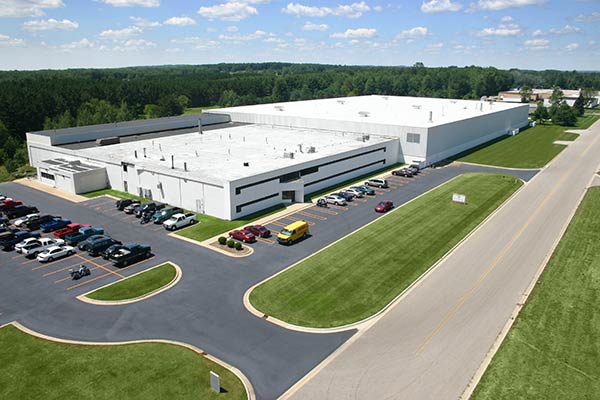

The Rogers Group: A Growing Family Concern
In the midst of the Great Depression, Orley Rogers desperately sought an answer to the question; “how can I provide for my family?” Responding to the need of budget-strapped coaches to repair damaged football equipment, this opportunistic shoe cobbler set in motion the enterprise we see today as the Rogers Group. Orley would gather the dirty, worn protective gear from high schools across the state of Michigan and then clean and repair it for the next season.
A decade later his son Orley W. returned from WW II and joined the business to provide for his wife and child doing what he had been taught by his father. Father and son labored side by side for 15 years until the founder’s death. Orley W (Bud) purchased the business and moved forward with a determination to make the best of things. He developed a key account with the Detroit Lions that opened the door for his sons several years later.
The untimely death of Bud at the age of 49 evoked in his wife and sons the same emotion both he and his father felt, take care of the family. David who had just returned from a two-year mission for his church joined with his 19-year-old brother Richard and their mother to move forward, much as their handcart pulling forbearers did 100 years before.
In the winter of 1968 the Lions head coach, Joe Schmidt, asked for help to develop a new dummy, a request that was met with optimism. It was certainly more exciting to make a new dummy than to repair the old smelly ones the boys reasoned. The dummy was a perfect solution to teach the new, heads-up blocking scheme being used by the Pro’s. Joe licensed Rogers to use his patent and the business transitioned from providing service to a manufacturing operation with a national sales opportunity. For the next 5 years the business grew exponentially.
In 1976 football coaches were coming under fire from critics that challenged the ‘head-up’ blocking technique, which caused a pause in the sales growth for Joe’s dummies. An engineer working on a new concept in outdoor staging invited Rogers to prototype his design. This led to a manufacturing relationship for several years with Aztec Staging, until they went out of business. In 1983 Rogers launched StageRight with a newly designed portable staging system. They secured a contract with a major international organization that provided critical volume for the start up.
For the next 30 years, the list of innovative products that were generated by the product development team at StageRight included; composite stage panels, bridging major event staging, multiple level understructures for deck sharing, adjusting stairs, powered telescopic risers with a guidance system, and composite sound shell systems. Award winning designs for fold-n-roll risers were a part of this library of products that positioned StageRight as a leader in the market place. Over 21 utility and design patents have been issued to protect its intellectual property.
Seizing opportunity was second nature to the Rogers business team. In 1979 they became aware of a contract opportunity with the Dow Chemical Company to process and package Saran film that is used primarily for food storage. This evolved into FILCON business unit which today produces and packages films under its own brand.
Al Glick, owner of Alro Steel, introduced Rogers to Tyler Hobson, proprietor of Pendulum Strength, which led to the acquisition of this boutique equipment line in 2008 and the beginning of Rogers’ serious reach into the elite strength training market. The redesigned Pendulum products, added to the emerging line of power racks put the Rogers brand on a winning lineup for the football strength coach.
Years have passed but the same pioneering spirit is present in the growing enterprise. Richard and David play a less active roll, but the Rogers legacy continues to be written by the decedents of Orley Rogers. Today six of his great grandchildren contribute to growing the enterprise, with Nathan Rogers serving as President and Chief Operating Officer.
Under the leadership of this 4th generation of Rogers’, the enterprise continues to move forward with the launch Tranquil Systems in 2013, a business unit that produces demisable wall systems to compete in a multi-billion dollar market.
On a typical fall weekend it is common to see a Rogers’ product during a college football game, recognize a stage or riser at a NBA/NHL venue while enjoying a sandwich that has been protected with Saran wrap, all products that have made their way from the Rogers Group to markets throughout the world.
